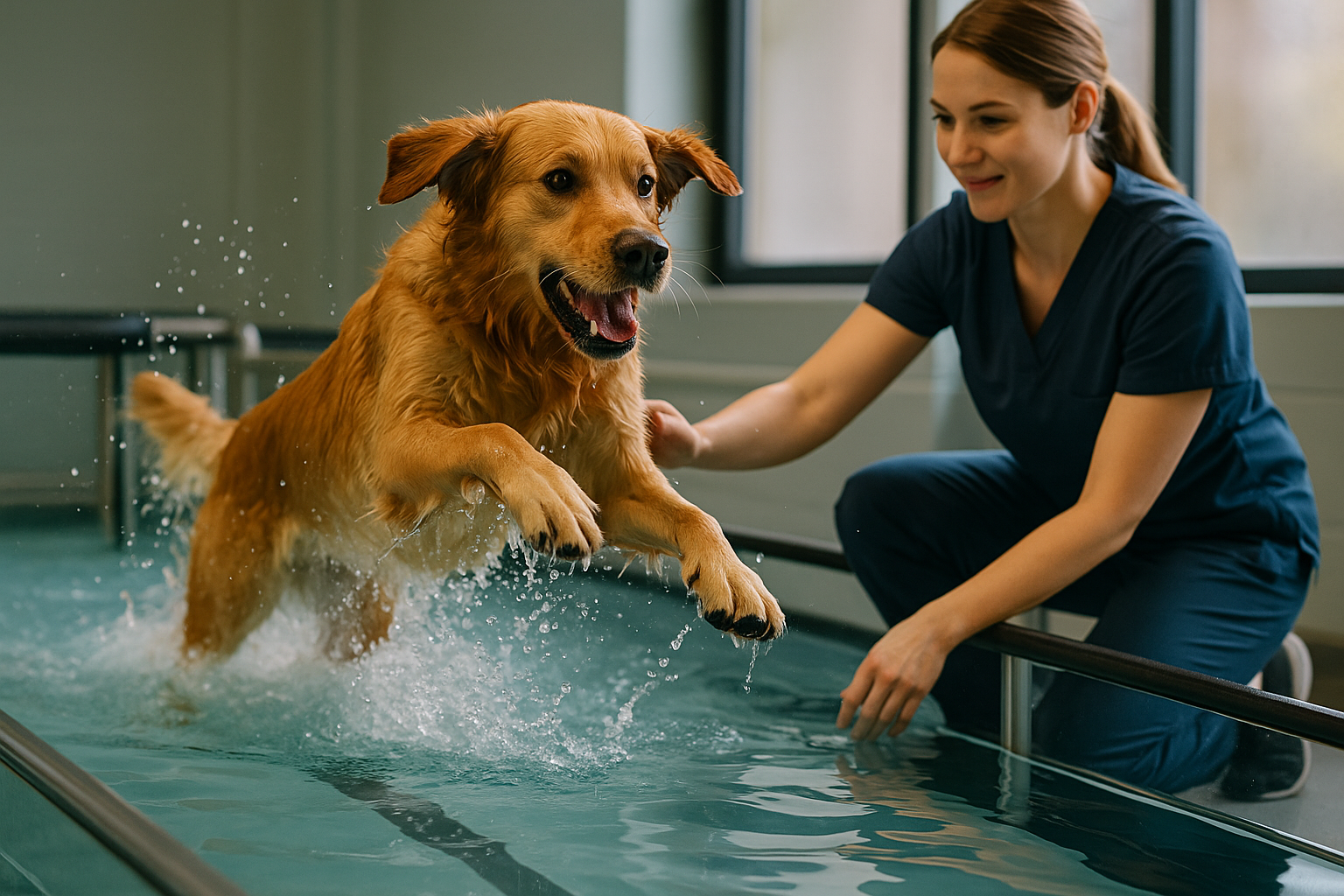Canine Hydrotherapy: A Leap Forward in Pet Rehabilitation
Diving into the world of pet rehabilitation, a unique therapy has been making waves. Canine hydrotherapy, a practice that uses water to aid in the recovery of injury or illness in dogs, is increasingly becoming popular among pet owners and veterinarians alike. Let's dive deeper into this innovative treatment and explore how it's changing the game in pet healthcare.

The History of Canine Hydrotherapy
Believe it or not, the practice of hydrotherapy traces back to ancient times. Human civilizations, such as the Romans and Egyptians, recognized the healing properties of water. They used baths, hot springs, and natural bodies of water to treat various ailments.
Fast forward to the 20th century, hydrotherapy was adapted for dogs, primarily for the recovery of hunting and racing dogs. In recent years, it has gained significant recognition as a holistic and effective method for pet therapy, driving a growing interest among pet owners.
Bringing Hydrotherapy to the Mainstream
The rise of canine hydrotherapy in the mainstream pet care realm is a testament to its effectiveness. This therapy uses the buoyancy, resistance, and temperature of water to create a low-impact environment that encourages dogs to move their joints and muscles without the usual stress and strain.
This therapy has proven beneficial for dogs recovering from surgery, suffering from arthritis, hip dysplasia, paralysis, or those in need of weight management. It’s also used to improve the fitness of working dogs like those in the police or rescue services.
The Costs and Market Impact of Canine Hydrotherapy
As a specialized therapy, canine hydrotherapy comes at a cost. The price can range from $30 to $75 per session, depending on your location and the specific needs of your pet. However, given its benefits, many pet owners consider it a worthwhile investment in their pets’ health.
The rising interest in hydrotherapy has also led to a surge in the market for hydrotherapy equipment. Manufacturers are now producing a wide range of products, from underwater treadmills to custom-built hydrotherapy pools, contributing to the growth of the pet care industry.
The Future of Canine Hydrotherapy
With an increasing number of success stories, the future looks promising for canine hydrotherapy. More and more veterinary practices are incorporating it as a standard part of their rehabilitation services. There is also a growing body of research supporting its benefits, further cementing its place in the field of veterinary medicine.
In a nutshell, the ripple effect of canine hydrotherapy extends beyond the realm of pet rehabilitation. It signifies a broader shift towards holistic and innovative treatments in pet care, paving the way for a more inclusive and diverse veterinary field.
Conclusion
Canine hydrotherapy is more than a passing trend; it’s a testament to the evolution of pet care, where innovative, non-invasive therapies are increasingly valued. As we continue to witness the profound impact of this therapy, there’s no doubt that our furry friends are in for some exciting times ahead.





